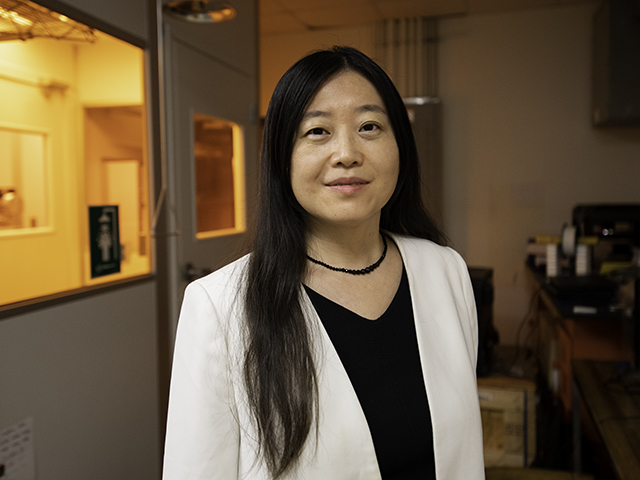‘3D Electrokinetic Tweezers’ Enables New Level of Control of Tiny Particles
Microscopically small particles are very challenging to move around. So much so that the breakthrough technology for doing that won the Nobel Prize more than 25 years ago.
But the technology, known as optical tweezers, isn’t without its limits. Chief among them, the technology usually can only move these particles from place to place, also known as two-dimensional manipulation.
An international research team led by Texas Engineers has developed a new method for manipulating these nanoparticles that not only includes position, but also rotation, for a third dimension of control. This “electrokinetic trap,” as the researchers call it, uses electric fields to capture the particles and then move and rotate them.
“To the best of our knowledge, this is the first time anyone has been able to control both the 2D position and 3D orientation of an untethered nanowire,” said Donglei (Emma) Fan, an associate professor in the Cockrell School of Engineering’s Walker Department of Mechanical Engineering.

Donglei (Emma) Fan, associate professor in the Cockrell School of Engineering’s Walker Department of Mechanical Engineering
The trapping mechanism demonstrated in a new paper in Nature Nanotechnology is based on a different principle compared to optical tweezers and demonstrates several advantages.
Optical tweezers use a concentrated laser beam to manipulate particles. The electric fields in the electrokinetic trap use the particles’ natural charges to manipulate them.
The technology is able to overcome the challenge of Brownian Motion, the random motion of particles suspended in a liquid that comes from running into atoms and molecules. The result is highly precise movement of nanoparticles, now uninterrupted by Brownian Motion.
In the paper, the researchers demonstrated the ability for a nanowire to draw complex patterns such as a ballerina and detect a single bacterium’s metabolites with pinpoint accuracy.
This technology is part of Fan’s research focus to design and develop robust techniques that work as remote handles of nanoparticles for their use as miniaturized tools that can operate, sense, and deliver drugs on the level of single cells, the basic building blocks of life.
But none of that can happen without control at a precision of nanometers, the size of a common component of a cell.
One place where this technology could make a major difference is the blood-brain barrier, a network of blood vessels that regulate the movement of ions, molecules and cells between the blood supply and brain. With more precise control of nanomachines, researchers could probe this highly sensitive area to learn more about its properties and the junctions between cells.
“We hope that this can become a very useful tool in decoding biological mysteries that can improve the development of drugs and therapies,” Fan said.
The project team includes Huaizhi Li and Zexi Liang of the Materials Science and Engineering Program, Daniel Teal and Alison Jin of the Walker Department of Mechanical Engineering, David Huo of the Department of Biomedical Engineering and Hyunah Kwon and Peer Fischer of Heidelberg University’s Institute for Molecular Systems Engineering and Advanced Materials and the Max Planck Institute for Medical Research.
